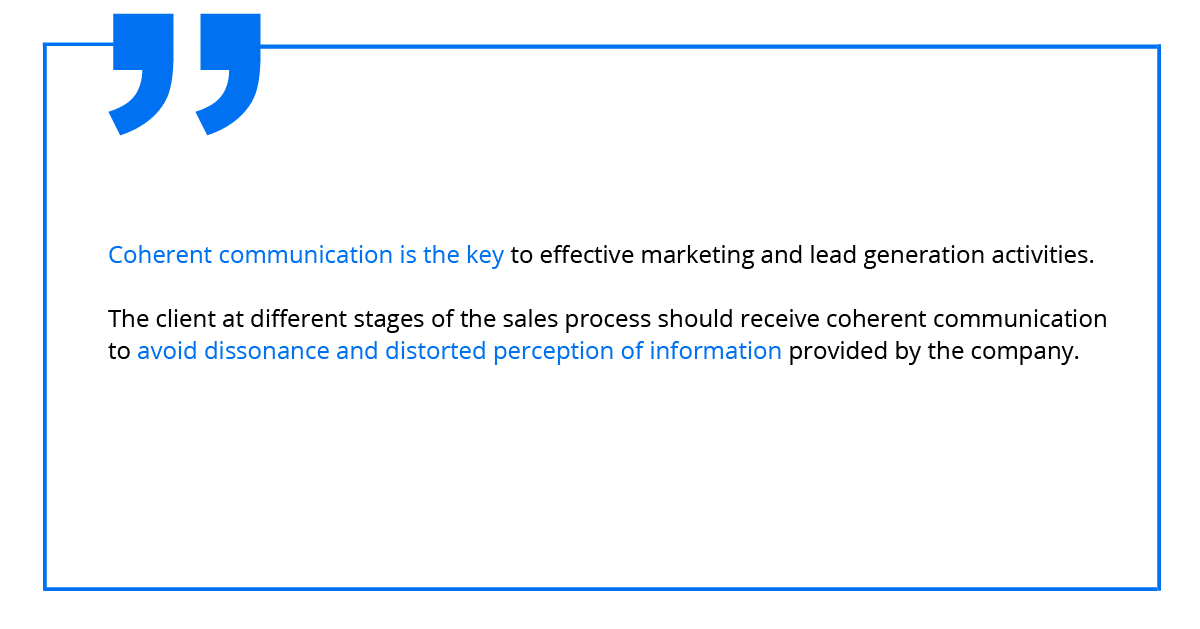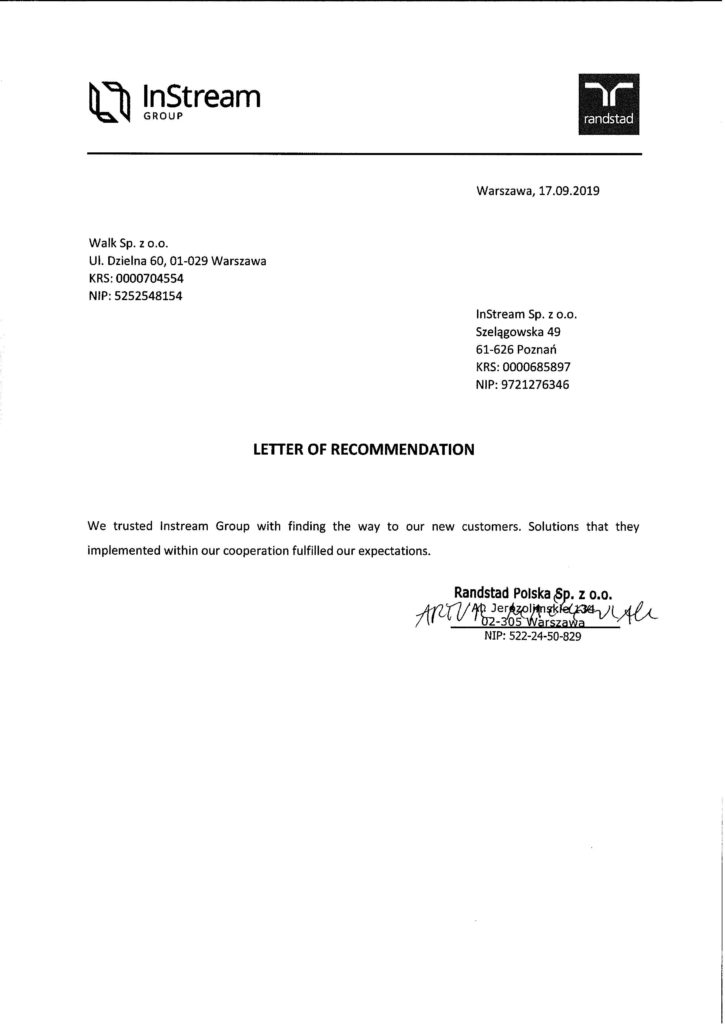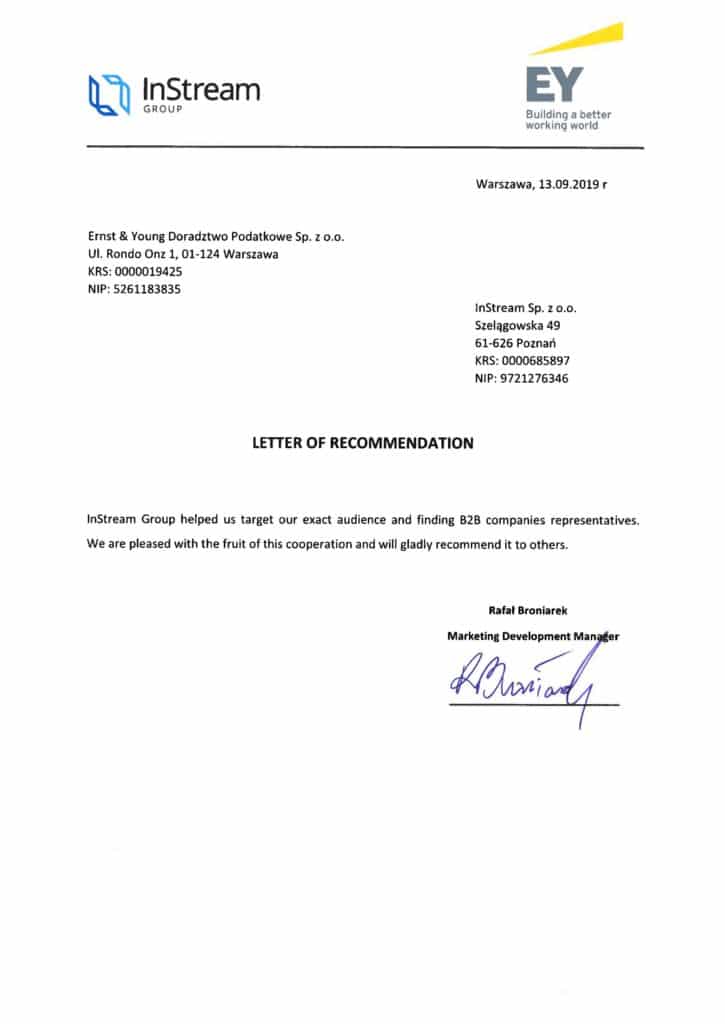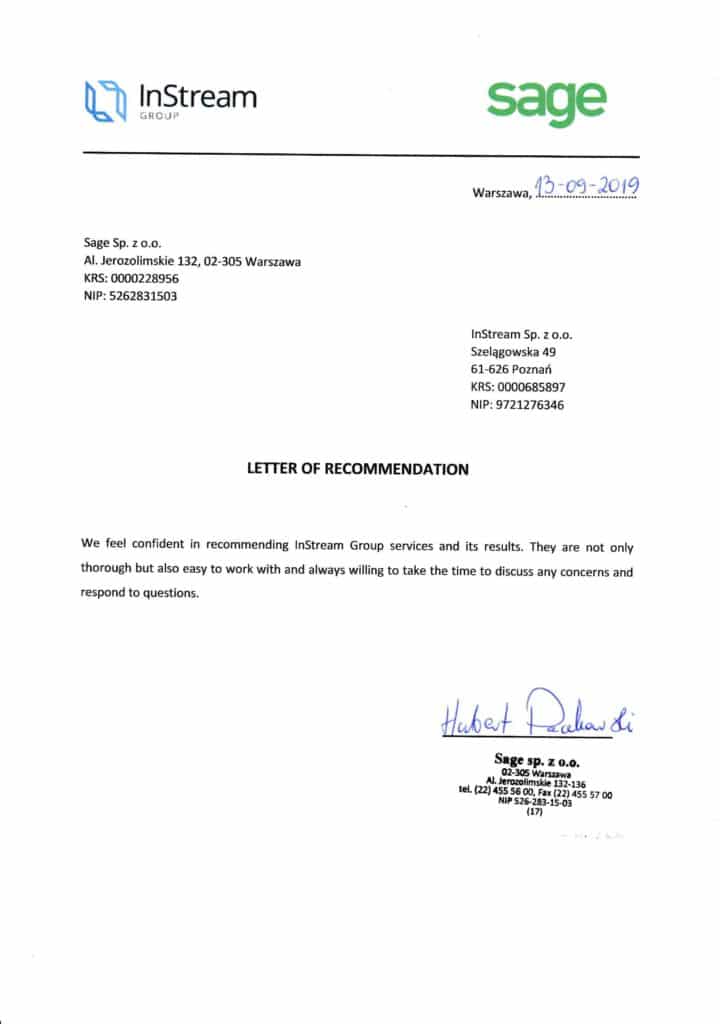Building an effective marketing team that delivers targeted results to the company is a real challenge. Building marketing campaigns requires a lot of action and rarely produces immediate results. That is why we have prepared some simple tips and guidelines to help you get closer to success.
These are our 10 guidelines for generating leads.
1. Get to know the customer
Customer knowledge is actually the basis of any marketing or sales activities. Unfortunately, many companies devote very little time to this element. We often focus only on the profile of the company or tend to conclude that each company is potentially interested in our services. This, of course, results in the message that is being prepared in marketing or sales activities being wrong and not producing the expected outcome.
The more we invest in analysing our clients’ profiles, the more we find out what we have in common with them, what processes they undertake every day, and how our solution is able to help them, the more effective our marketing campaign or lead generation campaign will be.
When examining our clients’ needs, it is important to consider their daily activities, the challenges they face, as well as the feelings and uncertainties they have about this. In this way, we are able to design a communication pattern that will be useful not only in marketing activities but above all in lead generation activities.
It is important that communication is coherent in the organisation. This applies to all visual as well as non-visual elements. Namely, the website, marketing communication, sales strategy, and how the traders communicate with the client. All this has an impact on the effectiveness of actions taken by the company.

2. Measure the results
Whatever marketing and sales activities our team carries out, the most important element is to measure their effectiveness. If we do not measure something, we are not able to estimate if it actually works for us and if we head in the right direction. Only the right data allow us to assess whether specific results are ultimately good or bad. An organisation that does not focus on measuring results stands still. Conversion, CPL, CAC, and many others are certainly among the most important metrics for marketing.
You can read more about this here.
3. Test
When deciding on some marketing and lead generation activities for the first time, one should be aware that there will be no immediate success. Some actions taken in a specific way may sometimes fail. It is important to make further attempts and tests. For example, in the context of a website, the A/B tests are an excellent way to check whether the website is converting, and if so, how. In this respect, two versions of the website are created and tools such as HotJar or Google Analytics are attached. The conversion and user behaviour on the website is measured at a specified interval.
4. Diversify activities
Not only should a specific channel be tested in the context of its various uses, but above all, the various sources of lead generation in general.
In the case of lead generation, there are many sources and methods of their capturing. A lot of information on this subject can be found in this article.
There is no ideal recipe for marketing activities for a specific business. Depending on what the company sells, appropriate marketing and sales channels are selected.
It is known, however, that if a company offers products for a wide group of customers with a relatively low total price, marketing activities aimed at reaching a wide group of customers are most often chosen. This method usually has the disadvantage of not being able to match the target perfectly.
For businesses that specialise in a very specific niche, practices using dedicated SEO activities, as well as lead generation activities typical for sales departments – Cold Mailing or Social Selling – are most often used.
The more lead generation channels a company has, the more creatively and effectively we are able to design a machine for customer acquisition.
5. Maintain coherent communication
As I have already mentioned in one of the points, coherent communication is a key element of effective marketing and lead generation activities.
It means that a client at different stages of the sales process receives very coherent communication. Regardless of whether it is a client who is only just getting acquainted with the company’s activity or one who already knows the values advocated by the company.
This seems obvious but is not so in practice. In many organisations the marketing and sales departments use completely different communication. Unfortunately, this creates a dissonance for the client and distorts the perception of what the company actually delivers and what its core values are.

6. Invest in what works
One of the most practical rules in marketing and sales is to scale up those activities that produce the best results in organic form.
Before you decide to invest in a lead generation method such as AdWords, try to run a very low budget campaign. Measure the best results and then develop and support with an additional budget.
Invest only in activities that work well from the very beginning.
Unfortunately, many companies invest very large amounts in advertising, without thoroughly analysing its original version and results. Almost every marketing activity supported by an additional budget generates a kind of results, however, not always do we achieve the best results that we could have generated with our budget.
7. Verify the leads
Each organisation should learn from its data. The same is true for the generated B2B Leads.
Many marketing activities, especially those of a mass nature, provide leads that are not always in line with the requirements of the sales team. On the other hand, a large part of sales departments do not have a lead qualification model. This means that every potential client represents the same default value. This is unfortunately not true from the perspective of the sales process and repeatedly makes the sales team focus on those customers who by definition do not deliver the desired revenue.
Verifying the leads saves the sales team time to work with the numbers that have the greatest sales potential, but also allows the marketing team to understand which leads converts best. This knowledge should be used primarily to diversify sources and decide which channels are ultimately most effective. The fact that one channel will generate more leads than another does not necessarily imply that this is the best solution. The verification of the leads and determination if they convert into sales potential still plays an important role here.

8. Use modern tools
Observing many companies from outside, we notice that too little is said about modern marketing and sales tools in organisations.
Many processes, which until some time ago did not have support in the right technology, a year later have already had several solutions in the commercial market. It is precisely in this respect that a good marketer should constantly develop his or her competencies and keep up with the trends and technologies that are being implemented in the marketing and sales services market.
Observing the trends in the market of marketing and sales application manufacturers, one could say that this sector’s direction of development aims to optimise the time spent by the marketer on specific activities. This has a direct impact on financial benefits in the company and allows him or her to focus on those elements that are crucial for the company.

9. Learn and read
Many modern technology companies use knowledge sharing as a form of marketing, thus creating a huge amount of fantastic ebooks, books, and videos from which we can learn how to effectively perform marketing activities and generate leads.
Good marketing team members develop their skills on an ongoing basis, follow the latest trends, and reach for new, only recently tested solutions. They often implement their concepts themselves and in this way develop their sales and marketing machine.
This is the end of the lead generation tips and guidelines in this article. A new dose of sales and marketing knowledge is waiting for you in the other articles.
I encourage you to read and follow our blog. See you there!



